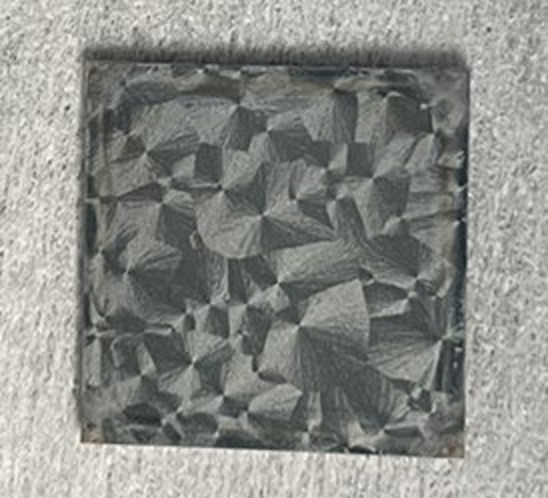An international team of researchers demonstrated perovskite solar cells treated with a molecular passivator based on π-conjugated terpyridine-Lewis base molecules that achieved an energy conversion efficiency of 25.24%, of which 90% was retained after 2,664 hours of light exposure . The treatment reportedly works at high concentrations without damaging the perovskite film or reducing cell performance. A protocol was published to reproduce the results, opening the door for testing on a range of perovskite absorbers.
An international team of researchers applied π-conjugated terpyridine-Lewis base molecules as a perovskite absorber passivating treatment in a study that showed it could be applied at high concentrations. Used in prototype perovskite solar cells, it reportedly improved passivation durability without reducing performance.
The perovskite durability-enhancing treatment based on π-conjugated terpyridine-Lewis base molecules was used in perovskite solar cells that reportedly achieved an energy conversion efficiency of 25.24% and retained 90% of initial performance after 2,664 hours of exposure light.
The results showed that the treatment works at high concentrations, which are typically needed to passivate surface defects over time, and that it can be applied without damaging the perovskite or reducing the performance of the solar cells made with it, creating a problem identified in the past is overcome. experiments.
“We have discovered a π-conjugated terpyridine molecule with a concentration-independent passivation effect, a property that allows us to treat the surface of perovskite at high concentrations without affecting the device efficiency, while for most passivators high concentrations tend to deteriorate the device. performance,” corresponding author Rui Wang shared pv magazine.
The group said their technology enabled high-concentration passivation without reducing device performance, significantly improving passivation durability. “The concentration independence allows surface passivation of excess concentration, which increases passivation durability as the excess passivation molecules interact with newly formed defects as devices degrade,” it explains.
The team noted that stability tests showed 90% of initial efficiency after 2,664 hours of light exposure, and 82% after 2,976 hours of heating. The experimental devices had a short-circuit current density of 25.97 mA/cm2, an open-circuit voltage of 1.19 V, and a fill factor of 81.65%.
The study was reported in “Enhanced Passivation Durability in Perovskite Solar Cells via Concentration-Independent Passivators” published in Joule The contributing scientists were from China-based Westlake University, Shangyu Institute of Semiconductor Materials, Zhejiang University and Fudan University, along with US-based University of California, Los Angeles and Lawrence Berkeley National Laboratory.
In a separate study, scientists from Westlake University and Zhejiang University published “Protocol for manufacturing sustainable passivated perovskite solar cells”, released STAR protocolsproviding the information necessary to reproduce the results.
“The most interesting aspect of the described protocol is the detailed description of a procedure for passivating the surface defects with a unique terpyridine molecule whose passivation effect is independent of concentration, thus significantly improving the durability of the passivation,” said Wang of Westlake.
Details are given on how to fabricate terpyridine passivated solar cells in a nitrogen atmosphere, including the electron transport layer via chemical bath deposition, the perovskite light absorbing layer via a two-step method, how to passivate the surface defects with excess terpyridine ligands, and how to perform stability characterization.
The protocol also outlines the theoretical calculation simulations, in-flight secondary ion mass spectrometry, and grazing X-ray diffraction to verify how the molecules accumulate on the surface of the perovskite.
By following the instructions, according to the researchers, it is possible to obtain long-passivated and highly efficient perovskite devices.
The team stated that the protocol may also be suitable for fabricating perovskite solar cells with other perovskite absorbers, such as “bromide and iodide mixed perovskites or with other various self-aggregated passivator agents.”
Looking ahead, Wang said his team will continue to address “some of the issues with defect passivation engineering, such as reproducibility and generalizability.”
This content is copyrighted and may not be reused. If you would like to collaborate with us and reuse some of our content, please contact: editors@pv-magazine.com.

